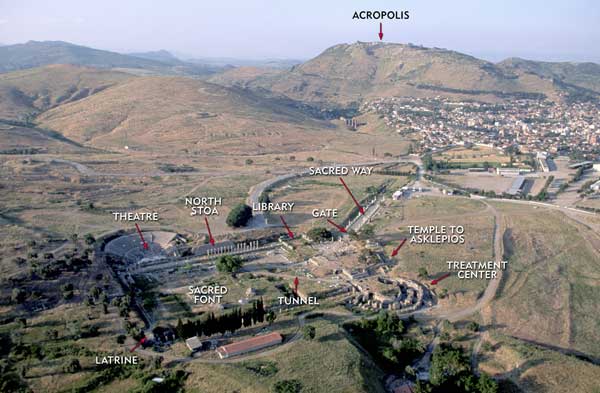The Great Pergamum Asklepion
Sidebar to: Asklepios Appears in a Dream

One of the largest and most active of Asklepios’s sanctuaries lay just outside the ancient city of Pergamum in northwestern Turkey. Dedicated to the god in the fourth century B.C., the sanctuary remained in use until at least the third century A.D., when Christian opposition to pagan forms of healing led to its decline.
Visitors to Pergamum’s Asklepion included the emperors Marcus Aurelius (161–180 A.D.) and Caracalla (211–217 A.D.). The best account of the sanctuary is by the orator Aelius Aristides (c. 117–181 A.D.), a notorious hypochondriac who at the age of 26 was struck by the first of a long series of maladies and then spent much of the rest of his life as a resident of the god’s sanctuary at Pergamum. His Sacred Tales records revelations made to him by Asklepios in multiple dream-encounters.
In the Roman period, Pergamum was the capital of the province of Asia. Its acropolis, shining like a marble gem on a steep ridge between two river valleys, strikes the eye for miles around even today. On the acropolis stood a library and temples in honor of the Olympian gods and deified Roman emperors. On a terrace just below the summit rested the Great Altar to Zeus, a massive U-shaped marble structure carved with images of the Olympian gods defeating their writhing foes in battle. (In the late 19th century, this altar was excavated and removed to Berlin, where it now stands reconstructed in the Pergamum Museum.)
Already a library member? Log in here.
Institution user? Log in with your IP address.

